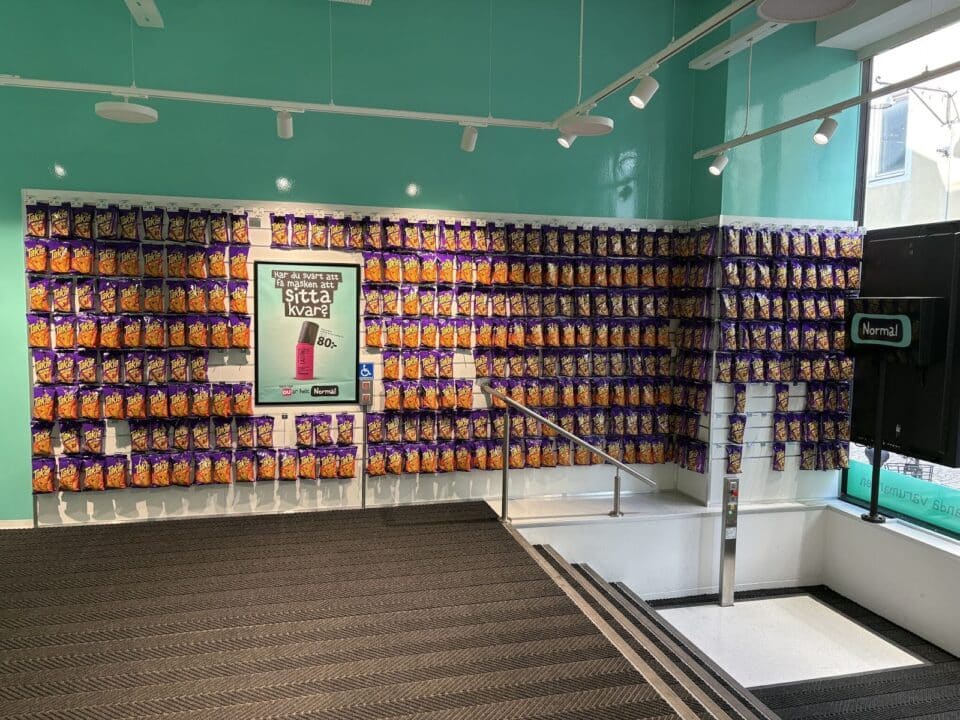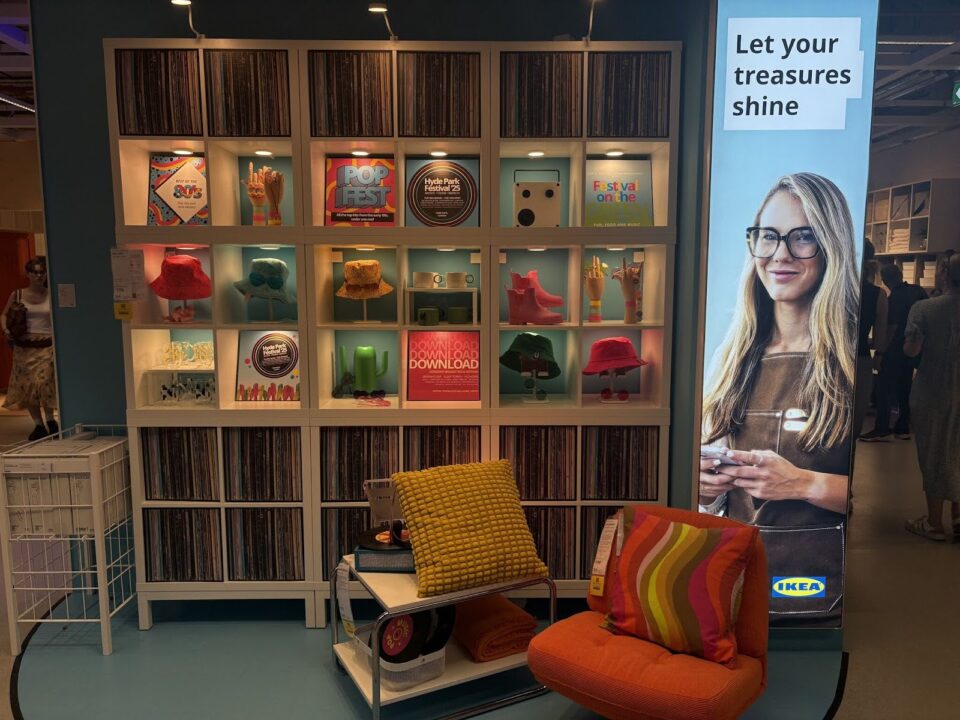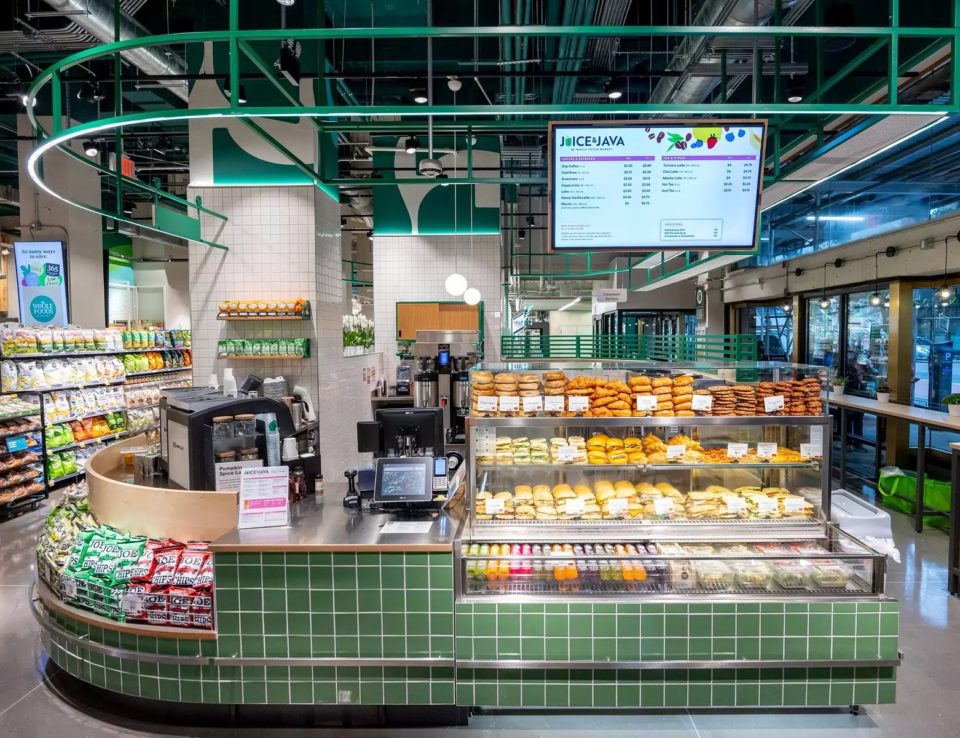How is nok brands turning the online returns challenge into a marketing opportunity?
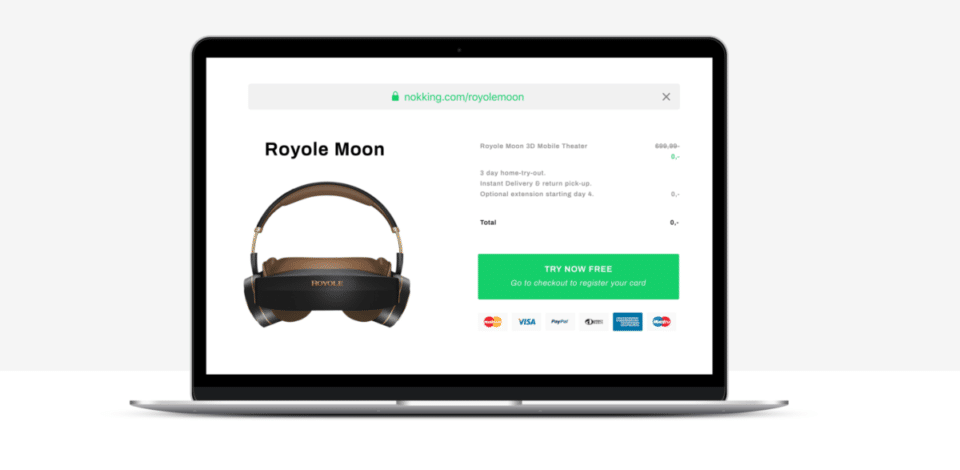
Trying before you buy has become a major part of our shopping experiences. It’s one of the reasons that the store exists. But it’s also one of the big challenges for ecommerce as once a product has been bought online and returned it can’t be resold at full price. Every return is a loss and there can be a lot of them.
There’s lots of ways that the industry is trying to tackle this problem. Nok brands’ solution might be one of the most innovative. It lets customers trial high-investment products for free at home for three days at a time, reducing the need for customers to buy just to try, and driving all-powerful word of mouth.
We got the insider track from founder and CEO Bobby Wann on how the system works, how returned products can become marketing assets and why having an in-home relationship with customers opens up a lot of new opportunities:
Bobby Wann, CEO, nok brands
Can you describe nok brands in your own words?
We provide a new channel for brands that generates the most superior product testing experience at scale. To do this, we created a supply chain system in major cities that brands can leverage to offer customers free trials of their products.
Our underlying product is our unique platform and software for aggregating last mile providers in major cities. I would like to think we’re the most competitive supply chain company at this time because we control the last mile in major cities. We have as much inventory and logistical capability as anyone out there because we tap into all of these partners.
We sit right at the beginning of the journey to buy a product. A customer will see an ad from a brand, click on it and go through to our system. They put in their zip code to verify that they’re in one of our cities. They then register a credit card, but they’re not charged anything to use the service.
The brand immediately captures that customer who tries the product for three days and then has the option to buy. If they want to buy, we’ll then come and swap the test product with a brand new one. If they want to return it, we’ll pick the product up from their door, take it to one of our partner warehouses, which are usually within one to two kilometres, and then the product goes through a repackaging and resetting system so it’s ready to go to the next customer that same or next day.
With just one hundred SKUs in one city we can reach 4000 customers in two months assuming that three people try a product per order. That leads to potentially hundreds of thousands of conversations about the brand in just two months.
You’re almost stealing that customer away from the other brands and then getting a private audience with them in their own home. If you can’t convert them with a private audience in their own home, then I think that’s a direct sign of your product just not being what the market wants.
Which cities are you operating in?
We’re in just about every major German city, London and Amsterdam, and we just expanded into LA, San Francisco, Seattle and Chicago.
There’s a strong sustainability element to our business. We remove every bit of CO2 emissions and packaging waste because the products don’t have to leave the city, so they don’t need a gas-guzzling truck. We can deliver them with electric vehicles and bicycle couriers.
How quickly does someone get an item after ordering?
The beauty of having a hyper-local system is that we don’t need to get the inventory to the city first. It’s already there. Generally speaking, we can deliver same day or next day at latest. In some cities like Berlin, where we started the company, we’ve optimised logistics to the point where we can offer two-hour delivery.
Do customers get brand new products to try or sample ones?
It depends on the brand. There is always a chance of getting a new product. There is a higher chance of getting a used product, especially if they’ve already launched the product with us.
What’s the process if a customer wants to keep a product after testing it?
It depends. If it’s a DTC brand we hold new units that are just for sales, so we simply send one of those out. We promise the brand that every sale is final. We take all the risk of a return because we believe that if they’ve already tried it they won’t return it (excluding manufacturer defects).
If it’s a retailer then the customer would buy through their account page on our platform, which would take them to the retailer to checkout. We then pick up the test product, repackage and reset it and send it out to the next customer. The retailer never has to touch the test products. It’s completely asset and pain free for them.
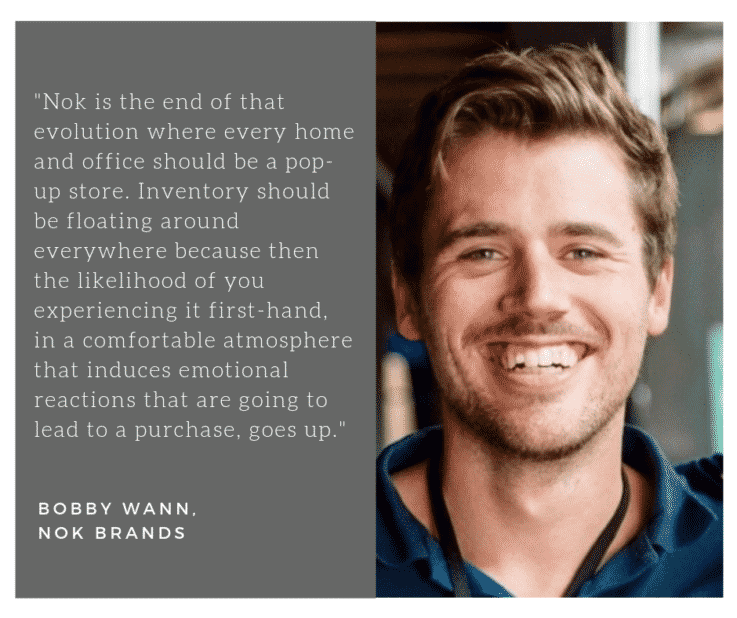
What types of products is the service aimed at?
We focus on high-end consumer products like jewellery, handbags, smart watches, luxury watches, phones, tablets, speakers, headphones and consumer electronics. Usually when you’re in this higher product range you have stiff competition with many different brands battling for the same market. These companies struggle mightily to acquire customers. This is really a silver bullet.
McKinsey released a report that said during a customer’s journey if they’re aware of three brands, they will always choose the brand that offers the best evaluatory service. That’s why Casper was able to dominate with its 100-day return policy. Warby Parker not only has cheaper spectacles but lets you try them for free.
The customer wants this. That’s why people are buying and returning online. That’s the way that we evaluate products now. We no longer just make purchases based on a brand name.
Can people try a whole range from a brand?
We’ve been talking to a major brand that has a lot of different models of certain products and they actually approached us for the exact reason that they have a lot of customers who order three of the models to choose the one they like the most. This means they’re getting depreciation on two to three products per order.
They would love to not only send different models in one order through our service, but then use it as a way to upsell. Our system knows that a customer tried these speakers and bought this one, so then you can tell them about attachments or additional add-on products that go with that speaker.
What results have brands seen from working with you?
We want to make the sales cycles scrunch. If it took you a year to reach a million in sales we want it to take six months and reduce your cost to acquire a customer by at least 30 percent.
Our brands are able to acquire an order, on average, for only €5 in advertising. That’s the cost to reach one household, so if there’s three people there then it’s cost just over a euro to reach a customer’s hands inside their own home. We then, depending on the product, charge €50 for the order. All-in-all, you’re reaching a consumer’s hands inside their home from beginning to the end with just €21 or less.
It’s extremely scalable. The point is to generate word of mouth. Word of mouth generates 50 percent of purchases, yet brands are spending little to no marketing budget on word of mouth and experiences. After you’ve launched with us for a few months we expect your sales conversions to skyrocket everywhere else, unrelated to our direct channel, because people are going to start talking about your product.
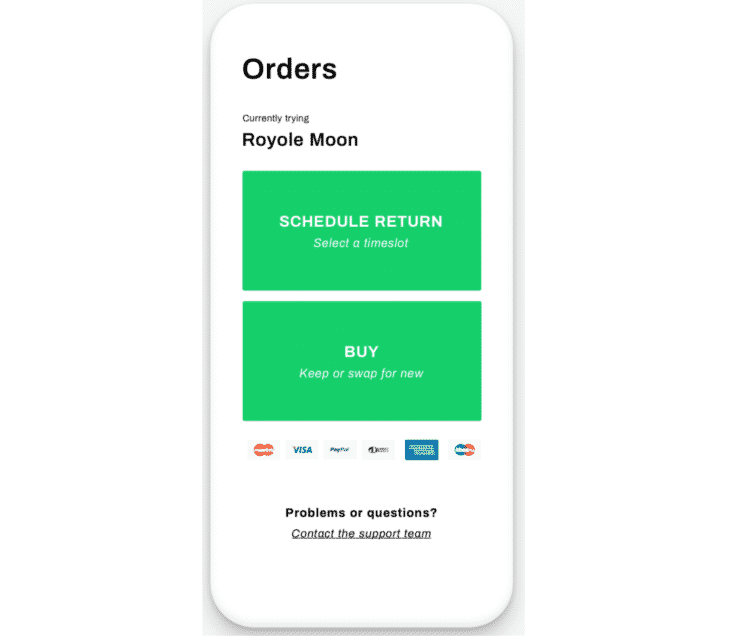
What kind of response have you had from people who use the service?
Customers love it because it’s like being a VIP. We have a 30 percent recurring customer rate in Germany. And they tend to order a product 1.8 times a month. Compared to the benchmarks that’s extremely high, especially given that the average person doesn’t spend more than a €1000-2000 a year on products in our categories.
They’re more likely to buy because we’re giving them the puppy dog effect; you tend to splurge when you’re not supposed to after you’ve had a great experience with the product. If you see a luxury handbag online it’s easy to stop yourself knowing that you’ve already spent too much this year. It’s a lot different when you’ve had the handbag and everyone’s been complimenting you.
I would say that the vast majority of our users are Amazon Prime users. They still choose to use our service because at the end of the day they’re not spending any money upfront, yet they get the same capabilities like delivery and pick-up. We steal orders that would have normally gone to Amazon. It’s a great way for these retailers to bring people not only to their store but back to their site.
How does this help brands tackle the returns challenge?
Thirty percent of a brand’s inventory will be bought and returned. Those units are a loss as they’re not going to be sold for a profit. The retail industry was trying to find ways to solve this challenge, but we don’t see why we need to think in this bubble that the products need to be resold. These are marketing assets that can just be kept in that city.
If five people buy products from a retailer and return them, that’s five depreciated products. If each product is worth €1000, you might be losing €500 per order. With our service, one product could have gone to all five of those people and only cost the retailer €50 per order, while generating an amazing experience for the customer.
We didn’t create something new – people are already using nok in their own way, in a less profitable way. Ninety-five percent of the high return rates that retailers are experiencing are because customers are exploiting the return policies in order to try the product from home. If they didn’t try the product on our platform it is highly likely they would have bought your product off Best Buy or Amazon and then they would have returned it and it would have cost you way more than it cost us.
Our goal, and something we’re starting to do with DTC brands, is that eventually the return labels on their products go to our warehouses. This means that rather than every return being a loss, the product is sent immediately to the next customer to try.
Are there any challenges or concerns that you’ve had to overcome?
People have been really good with products but there is the ability for a criminal to come in and try to find weak points in our system in order to get products and steal them.
When we were designing the service, we studied fraudulent returns and product stealing from Amazon. What we found out was that people tend to look for a way more complicated solution. There are companies that will analyse in 100 milliseconds all of your previous data to try to prove that you’re a real person and that you’re not using a fake credit card and they do this at a terrible rate of success.
With our system we said screw the data – how would you steal the product? It’s usually at the point of delivery. With our service we control the last mile; you have to sign for the product, show your ID and you have to be within the parameters of your building. This simple step removes almost all theft.
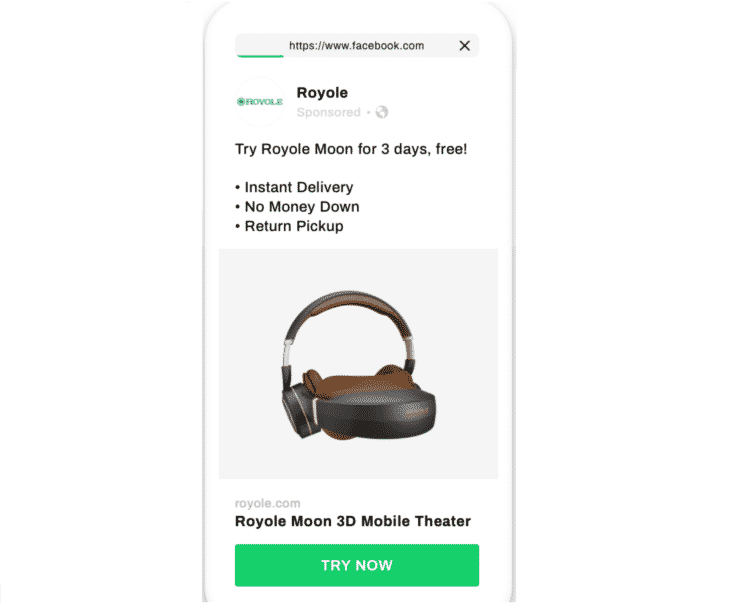
How does the trend towards an ‘influencer’ lifestyle online impact your business?
That’s huge for us. Sometimes brand worry about whether customers will try products just to try them and post online about them, but they give stuff to influencers all the time to post about. The difference is they pay the influencer for their post. With us, they’re paying us to handle the logistics and that customer is going to advertise the product for free.
We think that this service turns the entire market into early adopters. There’s no reason that someone wouldn’t try a product. Before, only early adopters tried products because they’re enthusiasts and they have a certain interest in what that product offers. Then the rest of the market is pragmatic and are only going to try the product if they believe it brings value and they’ve been convinced by friends and family. That all goes out the door when it’s free.
This is one of the reasons we’re exploring a new exclusive membership in the US for customers. They get free everything and additional perks like early access to products. The tradeoff being that the customer has to exchange lots of data.
In this way, we create this amazing database of influencers and know exactly how much influence that each is producing. Even if they try a product just to try it and show their fans that they have it, they’re actually creating a ton of value for that brand.
In a world full of fake Instagram posts, fake likes and fake news, authenticity is huge. This is why micro influencers are considered to be the best because they’re intrinsically authentic. They’re not Kim Kardashian getting paid, they’re a person with 500 to 5000 followers.
The next step in our revenue model is to have these customers who in return for the amazing service provide data and share content. I think once you have the digital and physical connection to a customer inside their home, and you know what products they’re trying, you’ve literally laid a road with which you can launch many other avenues.
It’s created this foundation that gives us a competitive advantage in marketing and data analytics and data retrieval and market research. The way that brands do market research would never be accepted by the medical or science community because all of the experiments are tainted with known flaws that skew results in a drastic way.
We’ve already launched with two brands where on the second day of trying the product we’ll push an email, or if they go to click return on the dashboard we’ll prompt the customer with market research. If you had a good experience, we’ll prompt you with micro influencing opportunities such as loyalty points or other perks if you post about it online.
How does nok fit in with physical retail?
With retail you have these giant stores where people go and buy stuff and then you have these pop-up stores and smaller brand stores that are additional touchpoints. Nok is the end of that evolution where every home and office should be a pop-up store.
At the end of the day trying a product in the store is the worst ways to test a product with your hands. If you’re trying a product like a phone for 10 seconds, what can you really learn? Your living room is by far the best place for your friend to experience the product.
Inventory should be floating around everywhere because then the likelihood of you experiencing it first-hand, in a comfortable atmosphere that induces emotional reactions that are going to lead to a purchase, goes up. Our system generates that ability to have products everywhere.
Do you have any other plans for the future?
We’ve been aiming at brands, but I would really like retailers to wake up and stop looking at their company with the same business model every time.
Retailers have all these relationships with brands. They take a lot of these brands’ trade budgets to get them into the retail store. They’re the ones dealing with a lot of these returns and they’re the ones that have the ability to get tap into this marketing budget. They should easily be able to turn around and leverage a service like us and sell it right back to their brands.
I think it’ll also bring more people to the store. The more word of mouth about a product, the more likely people are to get up and go to a store as well. There’s always going to be way more demand to try a product than there will be inventory units. So customers have to go to the store.
Imagine if nok is out of products but you can go to the store to pick it up. Or maybe a certain brand doesn’t offer delivery, only in-store pick-up. That removes the delivery portion, so we do the collection and the dirty stuff like repackaging, resetting and cleaning. That means instead of charging the retailer €50 we’re charging them €25.
Get more brand-customer relationship inspiration with our look at 31 of the world’s best brand homes. Want to go straight to the hottest retail technologies, latest disruptive thinking and simplest new ways to lower costs and boost sales? Transform your team’s thinking using Insider Trends’ little black book. Find out how here.

